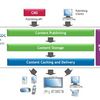By Mae Kowalke
Situational awareness is the perception of what is happening in one’s vicinity and understanding how information, events and actions will impact outcomes immediately and in the future. For public safety officials, situational awareness is achieved both through direct observations and through information conveyed by technology, often voice communications.
Voice communications is so ubiquitous in public safety, in fact, that one might think it’s the only means by which situational information is conveyed.
In a LifeTalk article, “Video is the Game Changer for Public Safety,” Philippe Agard, Vice President of Business Development at Alcatel-Lucent’s public safety division states that, “With the emphasis on voice radio, it’s easy to forget that voice is only one medium we use to communicate with one another, and not even the primary channel in face-to-face communications.” He adds that, “Most experts will tell you that a relatively small portion of our message comes through in words, the remainder transmitted by tone, inflection, volume and body language.”
Voice communications is so ubiquitous for public safety because, until recently, it was the fastest and most reliable way to convey information to and from the field. Widespread deployment of 4G LTE wireless broadband networks is changing the game. These networks make it possible for public safety organizations to enrich their communications through tools like Alcatel-Lucent’s Striker vehicle communications system, featuring push-to-talk radio integrated with high definition video surveillance for a variety of devices including iPads and notebook computers.
“Data from health-monitoring devices in the Striker vehicle could be transferred through the cloud to a doctor’s office or hospital,” Agard explains. “Using a secure LTE broadband base station in the vehicle, it also serves personnel when traveling in an area without cellular connectivity.”
The video surveillance component of Striker and other next-generation communications systems is perhaps the most transformative for public safety as can be seen in all of the resources available in the recent issue of LifeTalk. No longer are officials limited to communicating via a car radio. And, in fact, to keep pace with the way citizens are using wireless technology, officials must add more capabilities to their own arsenal to keep pace.
“Extended protests and demonstrations such as the current Occupy Wall Street movements in many U.S. cities are not the disorganized crowds of years past,” Agard says. “These groups employ scouts equipped with smartphones and social networks like Twitter and Google Maps to keep tabs on law enforcement units and each other.”
Freeing public safety officials from the limitations of vehicle radios, and adding the richness of video, means it’s possible to stay ahead of crowds, enhancing safety for everyone involved.
Using video surveillance as part of public safety communications, as in the Striker system, employs LTE wireless broadband to make sure everyone is seeing the same picture. This changes the game from ‘what-you-see-is-what-you-get’ to ‘what-I-see-is-what-you-see.’
Systems like Striker, designed specifically for public safety, are made more powerful by integrating consumer devices into the network.
“Smartphones and tablet computers can display the same maps, photographs or blueprints simultaneously to all the users on the network,” says Agard. He amplified this stating that, “When a Police chief says, ‘I need somebody here,’ he can point to a place and drop a pin on a Google Map, everyone will see the same thing without a doubt.”
Access to video, in other words, changes the entire fabric of incident management. It changes how people in the field respond to nearby events, and how remote commanders make decisions about deploying officers. Virtual briefings can be held anytime.
Alcatel-Lucent is working with public safety officials in the U.S. and elsewhere to deploy communications systems that include video. An expanded demonstration project in São Paulo, Brazil, is already having great success.
“With a 20-30 MB/sec LTE connection to a first responder, there is a tremendous opportunity to rapidly communicate a considerable amount of visual information like pictures and surveillance footage to improve their safety and situational awareness,” Agard summarized, describing how São Paulo’s Polícia Militar is using the technology.
The São Paulo system uses an application called First Responder Video to stream video in and out of police cars, over an LTE wireless broadband network. This provides a dynamic, real time user interface on first responders’ laptops, smartphones and tablets.
Portable assets like the Striker vehicle can be used to create a temporary wireless broadband network in cases where permanent LTE installations aren’t yet available.
Increasingly, LTE wireless broadband networks are taking public safety to the next level, and will become even more widespread before long. “LTE is the new generation technology to increase responsiveness everywhere and enhance safety for everyone,” Agard concludes. Enriched communications and broader coverage via a cost-effective solution is the reason, and public safety officials around the world are taking notice.










